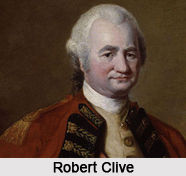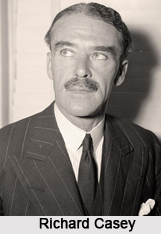 Bengal Presidency was an administrative subdivision of British India. The administration of this Presidency was looked after by several people holding varying positions. One such position was that of a Governor. Some of the Governors of Bengal Presidency are given below.
Bengal Presidency was an administrative subdivision of British India. The administration of this Presidency was looked after by several people holding varying positions. One such position was that of a Governor. Some of the Governors of Bengal Presidency are given below.
Robert Clive
Robert Clive acted as the English Governor of Bengal from 1758 to 1760.
Harry Verelst
Harry Verelst is documented in the pages of Indian history as a colonial administrator with the British East India Company and the governor of Bengal from 1767 to 1769.
John Cartier
 John Cartier was a British colonial governor in India. He served as Governor of Bengal from 1769 to 1772. His governorship coincided with the Bengal famine of 1770, when several people (one-third of the populace) died. Cartier was blamed for ignoring warnings about the impending disaster. But Cartier fed fifteen thousand people every day for some months using a magazine of grain. Later, Warren Hastings was selected as the replacement of Cartier, who became the first de facto Governor-General of Bengal from 1772 to 1785.
John Cartier was a British colonial governor in India. He served as Governor of Bengal from 1769 to 1772. His governorship coincided with the Bengal famine of 1770, when several people (one-third of the populace) died. Cartier was blamed for ignoring warnings about the impending disaster. But Cartier fed fifteen thousand people every day for some months using a magazine of grain. Later, Warren Hastings was selected as the replacement of Cartier, who became the first de facto Governor-General of Bengal from 1772 to 1785.
Lawrence Dundas
Lawrence Dundas is documented in the pages of Indian history as a British Conservative politician, who was an expert on India. He acted as the Governor of Bengal between 1917 and 1922 and had served as Secretary of State for India in the late 1930s. Although a member of the Conservative Party, Dundas was of the view that Indians should be allowed to take ever-increasing responsibility for the government of the country.
Stanley Jackson
Stanley Jackson was an English cricketer, soldier and Conservative Party politician. He was appointed the Governor of Bengal in 1927. He also became a member of the Privy Council. As the Governor of Bengal, Jackson inaugurated The Malda District Central Co-operative Bank Ltd in Malda District of Bengal in 1928 for promoting co-operative movements.
John Herbert
In his career, John Herbert was a Conservative Party politician in the United Kingdom and a colonial governor. He was appointed as the Governor of Bengal on 1st of July 1939. His governorship continued till his death in 1943. He was partly blamed for the Bengal famine of 1943.
Richard Casey
Richard Casey was an Australian politician and diplomat. He acted as the colonial governor of Bengal from 1944 to 1946.
Frederick Burrows
Frederick Burrows is recognized as the last British Governor of Bengal during British rule in India. His governorship lasted from 19th of February, 1946 to 14th of August, 1947.
Other Governors of Bengal Presidency
Some of the other Governors of Bengal Presidency are Victor Bulwer-Lytton, John Anderson and Michael Knatchbull.



















